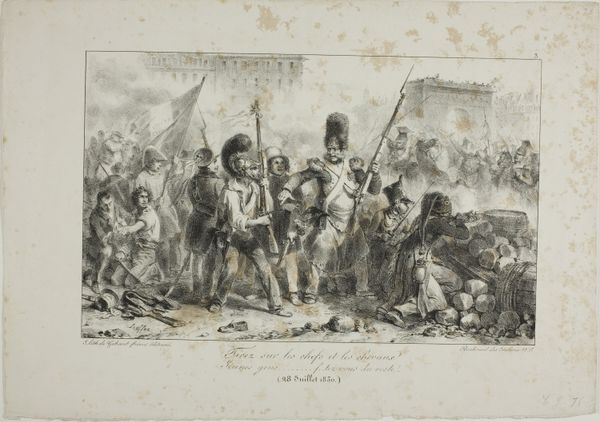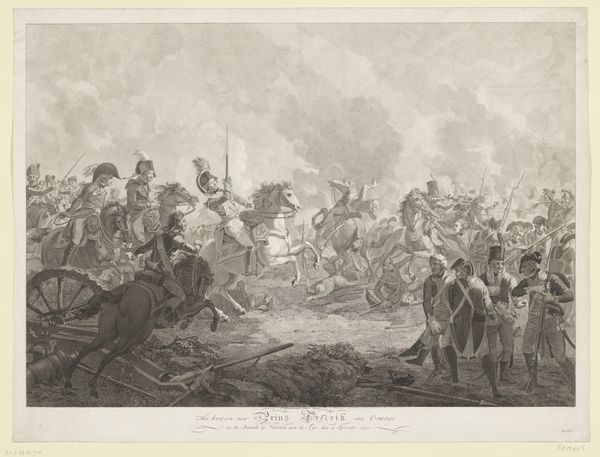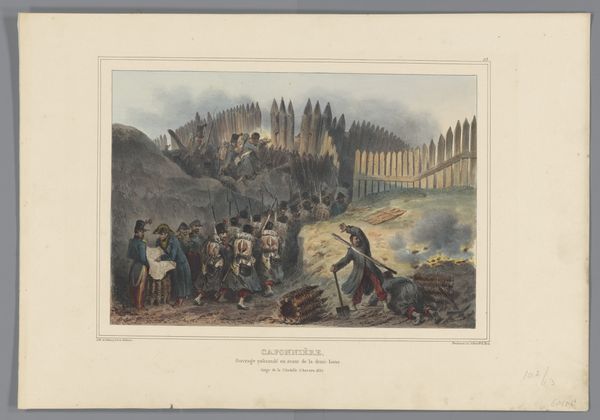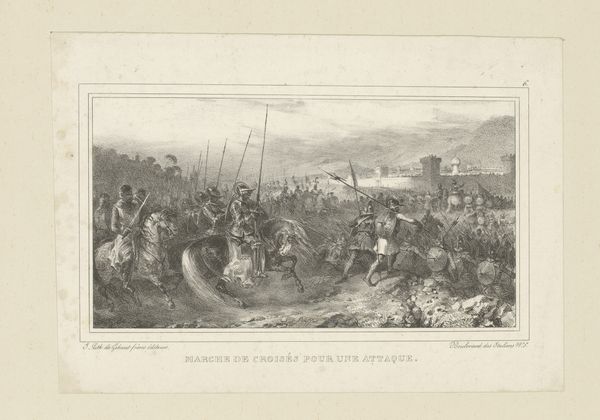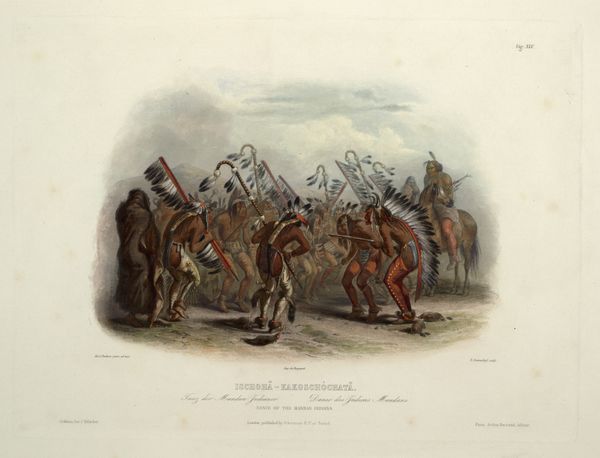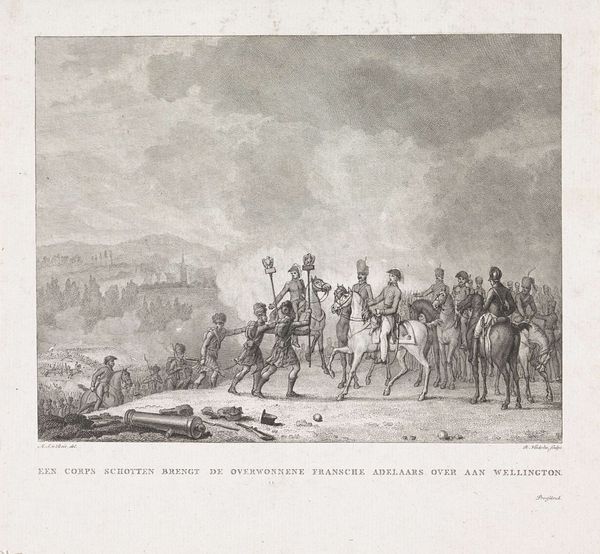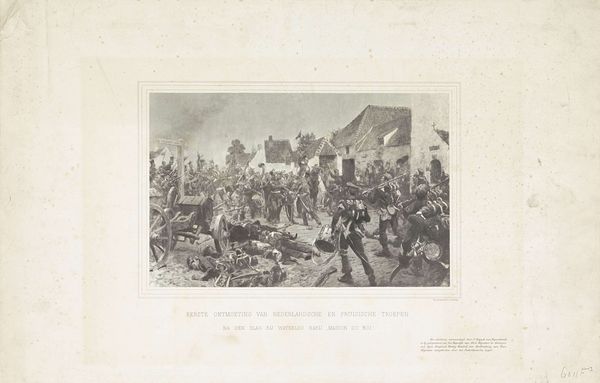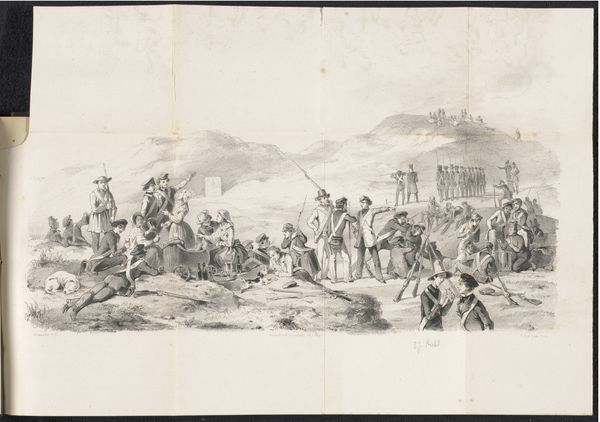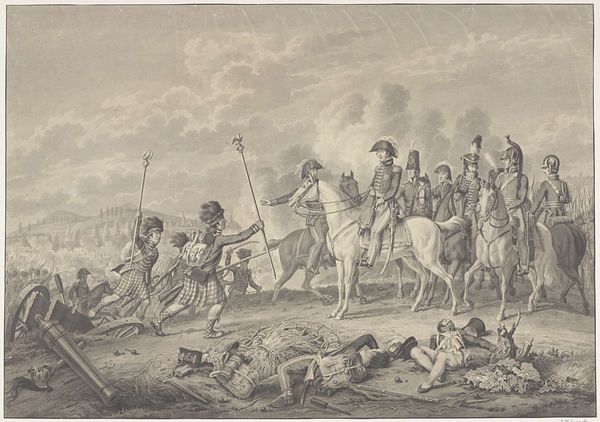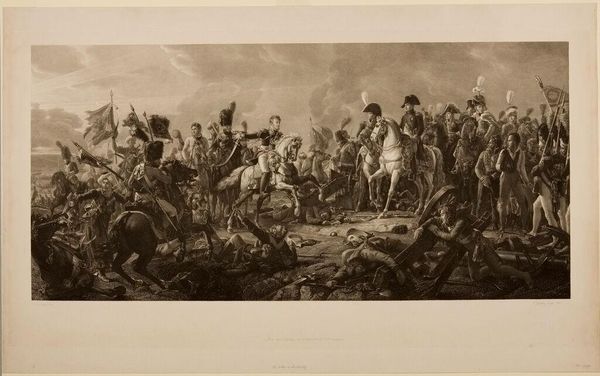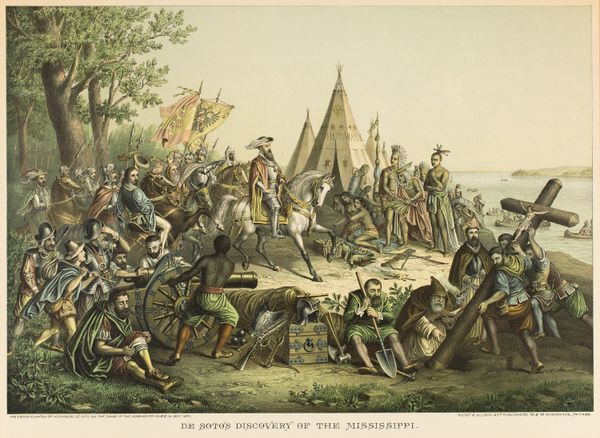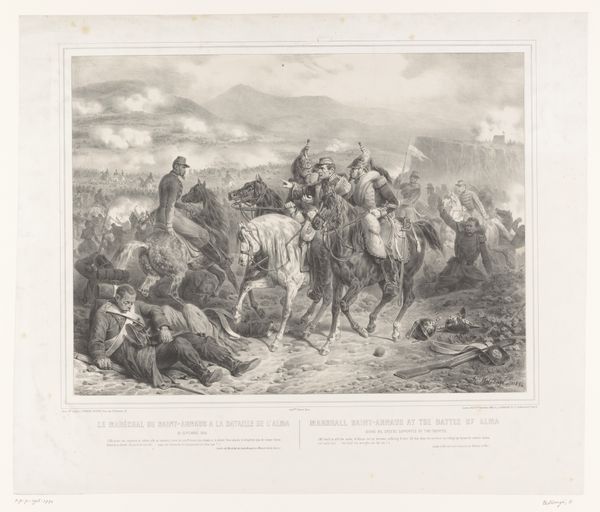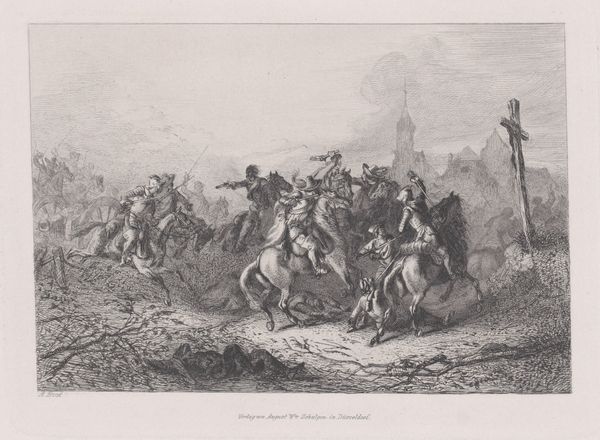
Buffalo-Dance of the Mandan Indians in front of their Medicine Lodge in Mih-Tutta-Hankush, plate 18 from Volume 2 of 'Travels in the Interior of North America' 1843
0:00
0:00
#
water colours
# print
#
watercolor
Copyright: Public domain
Editor: Here we have Karl Bodmer's "Buffalo-Dance of the Mandan Indians in front of their Medicine Lodge in Mih-Tutta-Hankush," a print from 1843 that uses watercolor. There's a lot happening! A dance or ritual seems to be underway, with people in buffalo masks and what looks like a whole village in the background. What strikes me is the energy, but I'm also a bit unsure what to make of it. What do you see in this piece? Curator: You know, when I look at Bodmer's work, I can't help but think about the journey itself, can't you? Imagine him traveling into this relatively untouched land, a landscape utterly different from anything he had known before. I find it fascinating how he balances ethnographic documentation with, dare I say, a romantic sensibility. The composition feels almost staged, a theatrical representation of this dance. What do you make of their relationship with the animal they emulate? Editor: That's interesting, I hadn't thought about the romantic lens shaping the documentarian view. I suppose that answers part of my initial uncertainty. It makes the ritual feel like a performance in both senses. As for their relationship to the animal, well, seeing them embody the buffalo with such intensity… Is it about power, respect, maybe even transformation? Curator: Precisely. There's an undeniable reverence here. But it’s also layered, don’t you think? He depicts the buffalo as something to be honored, but also perhaps as a resource, something intrinsically linked to their survival. And it makes me question, what are we looking at when we consider the "Travels" which this print belongs to? A portal? Or a reflection of something being lost, altered irrevocably the moment it's observed, rendered in watercolors? Editor: Wow, I'm left considering the weight of observation itself. It really highlights the complexity of how we perceive and document other cultures. Curator: And perhaps how we, in observing them, change ourselves in return.
Comments
No comments
Be the first to comment and join the conversation on the ultimate creative platform.
